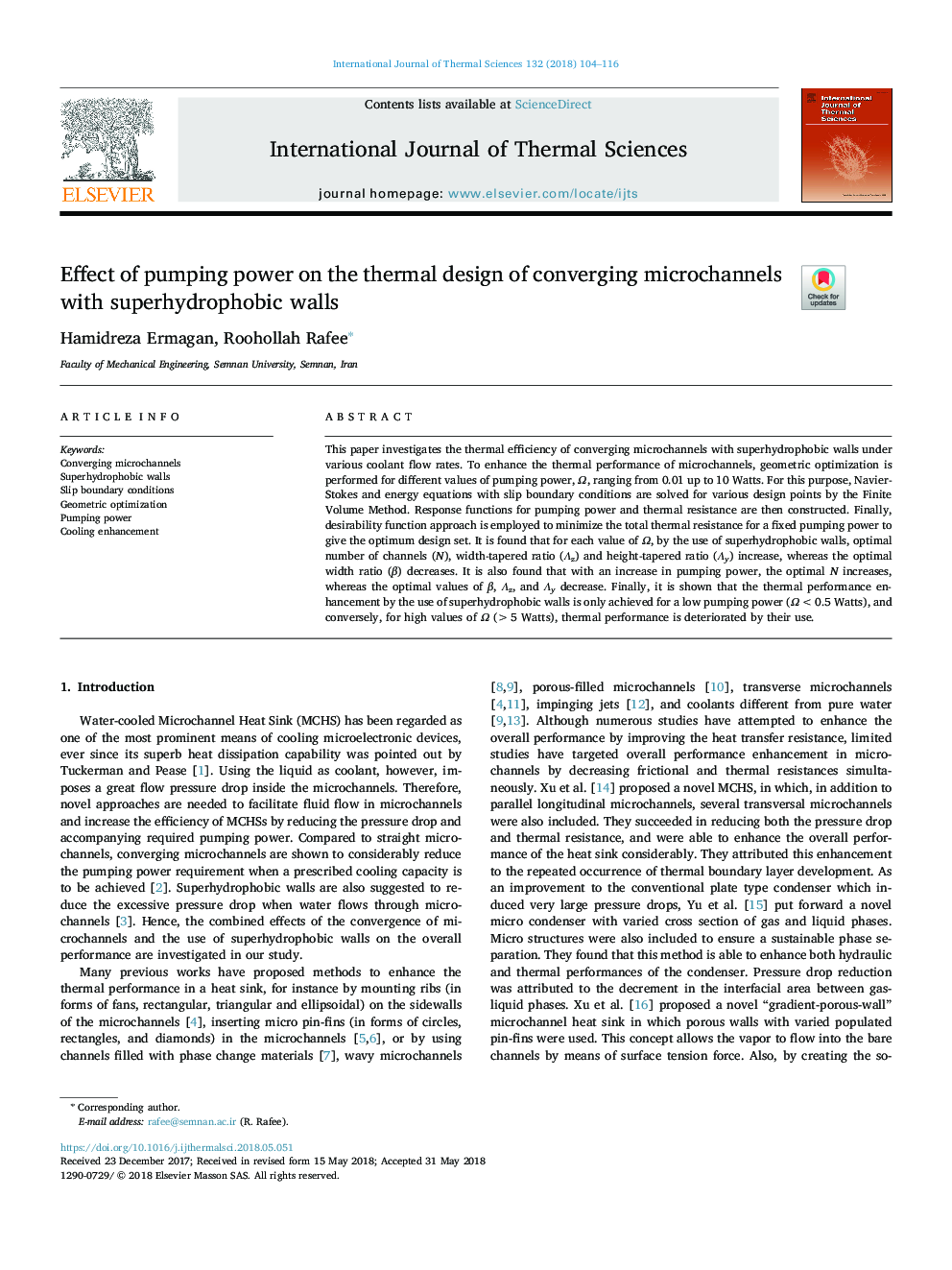| Article ID | Journal | Published Year | Pages | File Type |
|---|---|---|---|---|
| 7060569 | International Journal of Thermal Sciences | 2018 | 13 Pages |
Abstract
This paper investigates the thermal efficiency of converging microchannels with superhydrophobic walls under various coolant flow rates. To enhance the thermal performance of microchannels, geometric optimization is performed for different values of pumping power, Ω, ranging from 0.01 up to 10 Watts. For this purpose, Navier-Stokes and energy equations with slip boundary conditions are solved for various design points by the Finite Volume Method. Response functions for pumping power and thermal resistance are then constructed. Finally, desirability function approach is employed to minimize the total thermal resistance for a fixed pumping power to give the optimum design set. It is found that for each value of Ω, by the use of superhydrophobic walls, optimal number of channels (N), width-tapered ratio (Îz) and height-tapered ratio (Îy) increase, whereas the optimal width ratio (β) decreases. It is also found that with an increase in pumping power, the optimal N increases, whereas the optimal values of β, Îz, and Îy decrease. Finally, it is shown that the thermal performance enhancement by the use of superhydrophobic walls is only achieved for a low pumping power (Ω<0.5 Watts), and conversely, for high values of Ω (>5 Watts), thermal performance is deteriorated by their use.
Related Topics
Physical Sciences and Engineering
Chemical Engineering
Fluid Flow and Transfer Processes
Authors
Hamidreza Ermagan, Roohollah Rafee,
